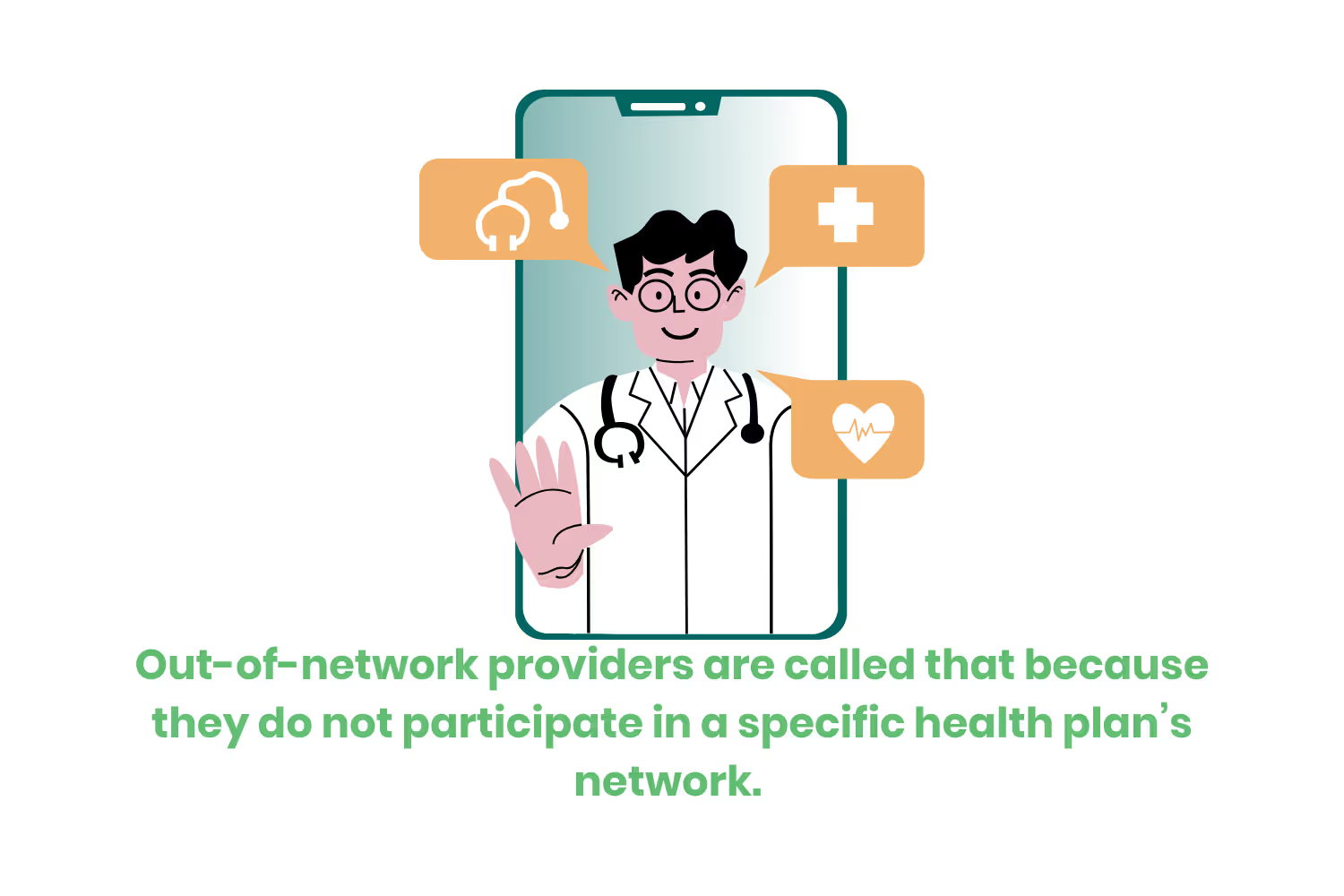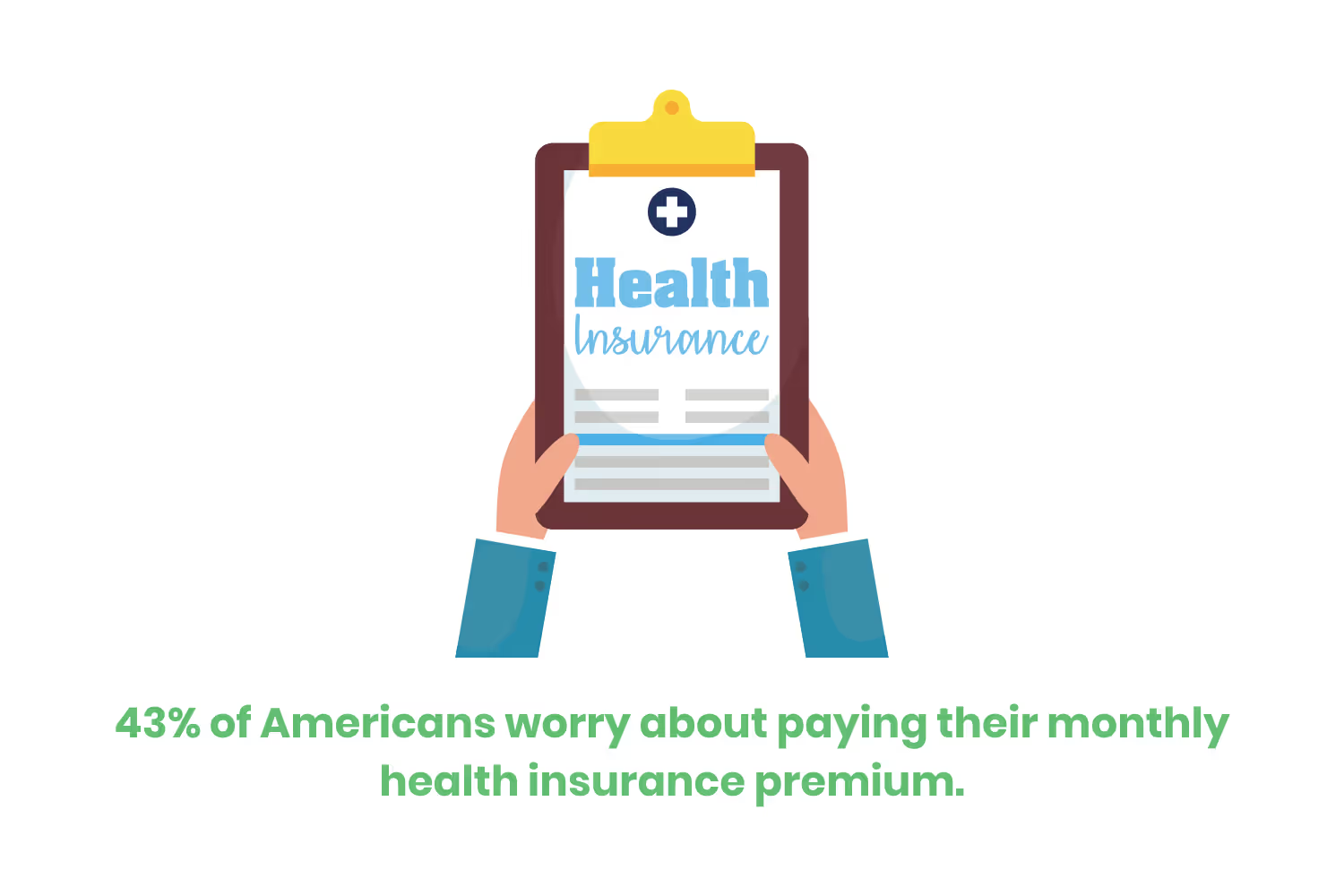[ANSWERED] What does out of network mean?
In this blog we go over what out-of-network means, the costs involved, and how to minimize those pesky surprise bills.

In 2024, unexpected medical bills and healthcare expenses top the list of the average American’s financial worries. Three out of four adults say they are “very” or “somewhat worried” about unexpected medical bills (74%) and the cost of healthcare services (73%). About 55% worry they cannot afford prescription medications. At the same time, 43% of Americans worry about paying their monthly health insurance premium.
Dealing with the healthcare system and navigating insurance plans is hard enough without surprise medical bills. But scenarios where patients receive surprise bills are all too common.

One of the biggest reasons for this happens to be when patients seek services from out-of-network providers. A provider, in this case, is a person or facility which provides healthcare services.
There are both in-network and out-of-network providers. Understanding the difference between these two terms might be what saves you from an unnecessary medical charge.
So let’s go over what out-of-network means, the costs involved, and how to minimize those pesky surprise bills.
What does "Out-of-Network" Mean?
While looking for a provider, you have likely run across the terms “in-network” and “out-of-network”. One is usually preferred over the other, and that is in-network providers. So what exactly is it about out-of-network providers that people tend to shy away from? Let’s dive in.
First of all, it has nothing to do with their level of skill, or whether they are a good provider or not. Out-of-network providers simply do not participate in a specific health plan’s network. So, if you are a patient, and the provider you choose to go to doesn’t work with the health insurance that you have, that provider is out-of-network.
This term not only applies to individual providers but also to hospitals and other healthcare organizations as a whole, too. When these entities are not contracted with a health insurance company, patients who choose to go there for out-of-network care tend to pay more or the full amount for their services. In other words, they do not accept the insurer’s negotiated prices for services rendered. This is the main reason why most people avoid this sort of care.
However, there are insurance companies that will cover some out-of-network care. These insurance plans are not as common and tend to have higher deductibles. As well as an out-of-pocket limit, or sometimes no upper limit, when patients seek care from out-of-network providers.

Another important thing to know about out-of-network providers is that they can and do balance bill patients for the rest of the charges. After insurance pays its share. In contrast, in-network providers agree to accept the insurance company’s payment, as well as any predetermined cost-sharing amount from the patient, as payment in full. Out-of-network providers are not obligated to do so, since there is no agreement with the insurer.
While we are on the subject, you might be wondering what exactly in-network means. The juxtaposition between this and out-of-network helps continue to paint the picture of why many patients avoid the latter. In-network providers and hospitals are in a contractual agreement with a health plan regarding rates for their services.
These providers and facilities must meet credentialing requirements, as well. Plus, agree to accept a discounted rate for covered services from the insurance company. By doing this, they ensure a spot in the health plan’s network. Patients who seek out in-network care tend to pay less. In addition to this, there is less of a chance of receiving a surprise medical bill.

Costs Associated with Out-of-Network Care
As we discussed, the main reason patients avoid out-of-network care comes down to the inflated cost associated with it. So why does it cost more? Well, first of all, you are paying full price for services. At least, you probably are. Without that contracted relationship between your provider and your health care plan, you are at the mercy of what the provider charges. That discounted in-network rate is not going to be available through this avenue.
Your share of the cost is likely higher than when you go to an in-network doctor. What is the share of the cost?
It is the amount of money that a patient is responsible for when it comes to paying for their:
- Medical-related services.
- Supplies.
- Equipment.

Note that there are no copays when you see a doctor or facility that is out-of-network. However, you must still pay for the coinsurance or whatever percentage of the covered services is applicable. This amount can be much higher than the in-network copay or coinsurance amount!
If the doctor’s bill is higher than what your plan might pay, you will need to pay the difference. Check your health plan to see the amount they are willing to pay for certain out-of-network services before making an appointment.
If that provider or facility charges more than your insurance will pay, you could not only be responsible for paying that difference. But also paying your deductible, copay, and/or coinsurance. The big difference here is that in-network providers enter a contract with insurance plans to not charge you more than the originally agreed-upon cost.

How to Minimize Out-of-Network Costs
There are a few ways you can minimize these out-of-network costs and unexpected medical bills. First, just knowing the difference between in-network and out-of-network is a huge step in the right direction. This topic can be a bit convoluted, but just having a basic idea of what is going on with your healthcare plan is vital. So you’re killing it so far! Let’s keep going with a few more tips.
First, check if the provider you are looking to visit is in-network. You can usually find out this information by going through your insurance company for more details. Either by visiting their website or calling the customer service number (on the back of your insurance card).
Ask questions regarding what services related to your care are in-network. Even if your primary provider is in-network, that doesn’t mean certain services will be, too. Providers and specialists who are out-of-network could handle services such as lab work, anesthesia, or radiology. Making sure you know exactly what services to expect can save you from surprise bills!
Don’t forget to regularly check to see if your insurance network goes through any changes! As providers join and leave a health plan throughout the year, you may need to adjust who you see. Review your insurance company’s provider directory for more information.
Finally, don’t be afraid to discuss costs upfront with out-of-network providers. They might be willing to negotiate a discount if you are paying out of pocket or set up a payment plan.

Out-of-Network Insurance Plans
Did you know that some insurance plans offer partial coverage for out-of-network services? Particularly Preferred Provider Organization (PPO) Plans. These plans allow greater flexibility when choosing providers. You can see both in-network and out-of-network providers without a referral, although the coverage will differ for each. These out-of-network plans often come with higher deductibles, co-pays, and co-insurance rates.
Another plan that utilizes out-of-network providers are Health Maintenance Organization (HMO) Plans. They are typically more strict than PPO plans, at least when it comes to using out-of-network providers and facilities. You must choose your primary care physician within the network. But this doctor can then coordinate your care with out-of-network specialists if necessary. There is an exception to this rule, however. HMO plans should cover out-of-network care in emergencies.
Conclusion
Understanding the difference between in-network services and out-of-network services is vital to anyone receiving healthcare services. Making sure you go to the right provider or facility can save you hundreds of dollars! Reducing medical expenses, especially during a time when prices for seemingly everything are high, is a financial win. Period.
You can reduce these medical bills by ensuring your providers are in-network with your insurance plan. Remember that in-network providers, are under contract with your healthcare plan to charge a pre-negotiated rate for services. Seeing an in-network provider means the costs you incur will apply to your health plan’s deductible and out-of-pocket maximum. If you need to see an out-of-network provider, make sure to do your research via your health plan for the best financial outcome.
Emphasize your product's unique features or benefits to differentiate it from competitors
In nec dictum adipiscing pharetra enim etiam scelerisque dolor purus ipsum egestas cursus vulputate arcu egestas ut eu sed mollis consectetur mattis pharetra curabitur et maecenas in mattis fames consectetur ipsum quis risus mauris aliquam ornare nisl purus at ipsum nulla accumsan consectetur vestibulum suspendisse aliquam condimentum scelerisque lacinia pellentesque vestibulum condimentum turpis ligula pharetra dictum sapien facilisis sapien at sagittis et cursus congue.
- Pharetra curabitur et maecenas in mattis fames consectetur ipsum quis risus.
- Justo urna nisi auctor consequat consectetur dolor lectus blandit.
- Eget egestas volutpat lacinia vestibulum vitae mattis hendrerit.
- Ornare elit odio tellus orci bibendum dictum id sem congue enim amet diam.
Incorporate statistics or specific numbers to highlight the effectiveness or popularity of your offering
Convallis pellentesque ullamcorper sapien sed tristique fermentum proin amet quam tincidunt feugiat vitae neque quisque odio ut pellentesque ac mauris eget lectus. Pretium arcu turpis lacus sapien sit at eu sapien duis magna nunc nibh nam non ut nibh ultrices ultrices elementum egestas enim nisl sed cursus pellentesque sit dignissim enim euismod sit et convallis sed pelis viverra quam at nisl sit pharetra enim nisl nec vestibulum posuere in volutpat sed blandit neque risus.

Use time-sensitive language to encourage immediate action, such as "Limited Time Offer
Feugiat vitae neque quisque odio ut pellentesque ac mauris eget lectus. Pretium arcu turpis lacus sapien sit at eu sapien duis magna nunc nibh nam non ut nibh ultrices ultrices elementum egestas enim nisl sed cursus pellentesque sit dignissim enim euismod sit et convallis sed pelis viverra quam at nisl sit pharetra enim nisl nec vestibulum posuere in volutpat sed blandit neque risus.
- Pharetra curabitur et maecenas in mattis fames consectetur ipsum quis risus.
- Justo urna nisi auctor consequat consectetur dolor lectus blandit.
- Eget egestas volutpat lacinia vestibulum vitae mattis hendrerit.
- Ornare elit odio tellus orci bibendum dictum id sem congue enim amet diam.
Address customer pain points directly by showing how your product solves their problems
Feugiat vitae neque quisque odio ut pellentesque ac mauris eget lectus. Pretium arcu turpis lacus sapien sit at eu sapien duis magna nunc nibh nam non ut nibh ultrices ultrices elementum egestas enim nisl sed cursus pellentesque sit dignissim enim euismod sit et convallis sed pelis viverra quam at nisl sit pharetra enim nisl nec vestibulum posuere in volutpat sed blandit neque risus.
Vel etiam vel amet aenean eget in habitasse nunc duis tellus sem turpis risus aliquam ac volutpat tellus eu faucibus ullamcorper.
Tailor titles to your ideal customer segment using phrases like "Designed for Busy Professionals
Sed pretium id nibh id sit felis vitae volutpat volutpat adipiscing at sodales neque lectus mi phasellus commodo at elit suspendisse ornare faucibus lectus purus viverra in nec aliquet commodo et sed sed nisi tempor mi pellentesque arcu viverra pretium duis enim vulputate dignissim etiam ultrices vitae neque urna proin nibh diam turpis augue lacus.



![[ANSWERED] What is a Long-Term Care (LTC) Pharmacy](https://cdn.prod.website-files.com/67e2b8210878abcba6f91ae6/68d687806a075a1cf64659b0_WhatisLongTermCarePharmacy_925.avif)
